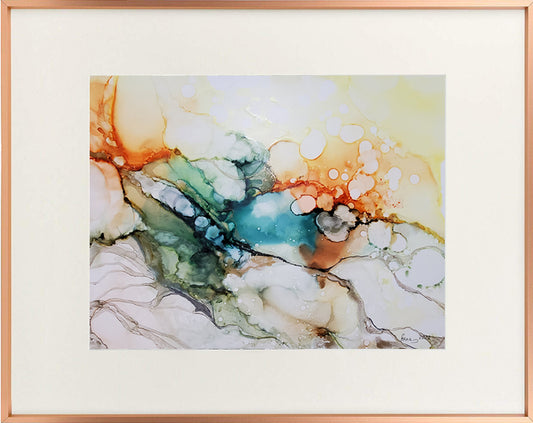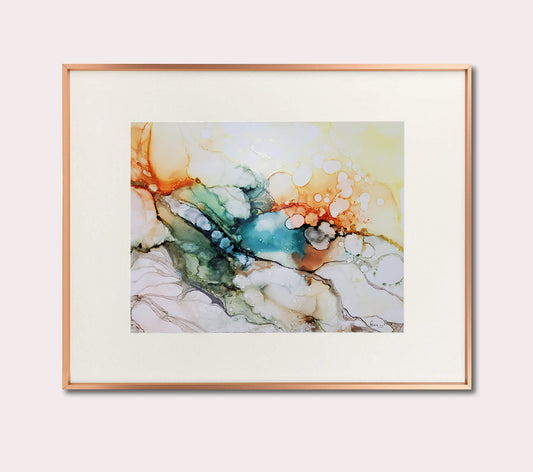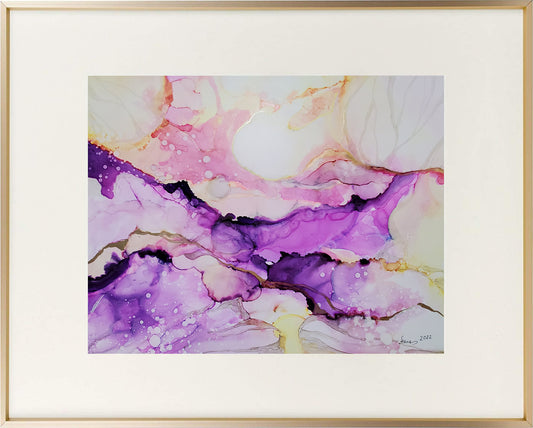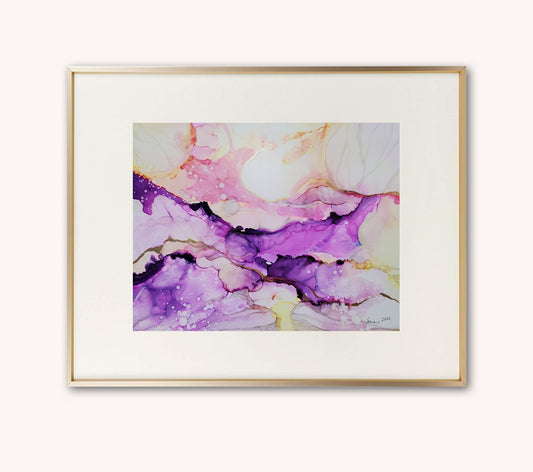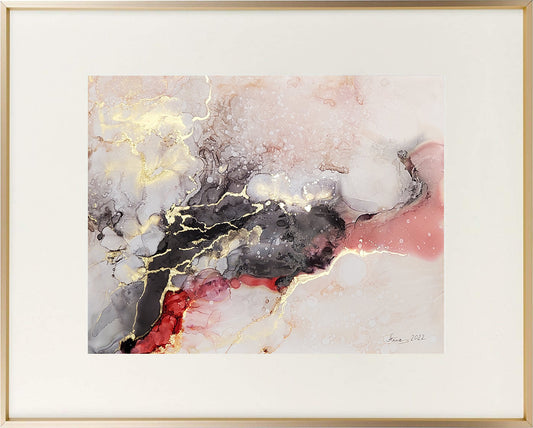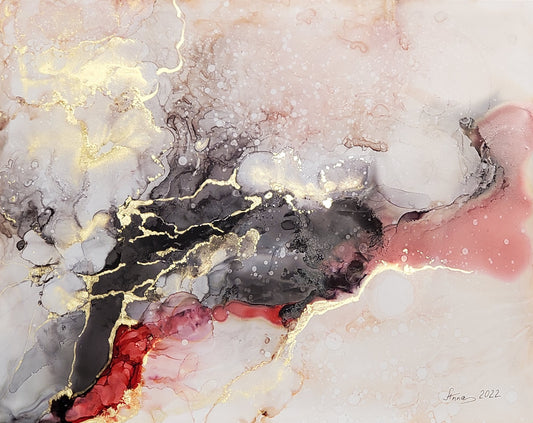
Abstract art is a term that encompasses a wide range of artistic styles and movements that do not attempt to represent external reality, but rather use shapes, colors, forms, and lines to create compositions that may have their own meaning or evoke certain emotions in the viewer. Abstract art can be traced back to the late 19th and early 20th centuries when artists such as Wassily Kandinsky, Piet Mondrian, Kazimir Malevich, and others experimented with new ways of expressing their artistic vision and challenging the traditional norms of representation. Since then, abstract art has evolved and diversified into many subgenres, such as abstract expressionism, geometric abstraction, lyrical abstraction, minimalism, and more.
But does abstract art have a message? Is there a deeper meaning behind the seemingly random or chaotic arrangements of shapes and colors? Or is abstract art simply a form of aesthetic pleasure that does not require any interpretation or explanation? The answer to these questions may depend on the perspective of the artist, the viewer, and the context of the artwork. In this blog post, we will explore some of the possible messages that abstract art can convey, as well as some of the challenges and benefits of interpreting abstract art.
What are some of the possible messages of abstract art?
One of the possible messages of abstract art is that reality is not objective but subjective. Abstract artists often reject the idea that art should mimic or imitate nature and instead create their own visual language that reflects their personal perception or interpretation of reality. By doing so, they challenge the viewer to question their own assumptions and expectations about what art should look like, and invite them to experience reality in a different way. For example, Kandinsky's abstract paintings were inspired by his synesthesia, a condition that allows him to see colors when he hears sounds. He believed that colors and shapes had their own spiritual meaning and harmony, and he used them to create compositions that expressed his inner feelings and emotions. He wrote: "The more abstract is form, the more clear and direct its appeal"¹.
Another possible message of abstract art is that art can be about the process itself, rather than the final product. Some abstract artists focus on the act of painting or sculpting as a way of exploring their creativity, experimenting with different techniques and materials, or expressing their subconscious impulses. They may not have a predetermined plan or goal for their artwork, but rather let it emerge organically from their interaction with the medium. The result may not be easily understandable or recognizable, but it may reveal something about the artist's personality, mood, or state of mind. For example, Jackson Pollock's abstract expressionist paintings were created by dripping, splashing, or pouring paint onto large canvases laid on the floor. He called this method "action painting," and he said: "When I am in my painting, I'm not aware of what I'm doing. It is only after a sort of 'get acquainted' period that I see what I have been about"².
A third possible message of abstract art is that art can be about pure form and aesthetics, without any reference to external meanings or narratives. Some abstract artists aim to create artworks that are self-contained and independent from any representation or symbolism. They use geometric shapes, primary colors, simple lines, or minimal elements to create compositions that are balanced, harmonious, or dynamic. They may not intend to convey any specific message or emotion with their artwork but rather let the viewer appreciate it for its own sake. For example, Mondrian's geometric abstraction paintings were based on his theory of "neoplasticism," which sought to achieve a universal aesthetic language by using only horizontal and vertical lines and primary colors. He said: "Art is higher than reality and has no direct relation to reality. To approach the spiritual in art, one will make as little use as possible of reality"³.
What are some of the challenges and benefits of interpreting abstract art?
Interpreting abstract art can be challenging for several reasons. One reason is that abstract art often lacks recognizable or familiar elements that can help the viewer relate to or understand the artwork. Without any clues or hints from the artist's intention or context, the viewer may feel lost or confused about what they are looking at or what they are supposed to feel. Another reason is that abstract art can be ambiguous or open-ended, meaning that there is no definitive or correct way to interpret it. Different viewers may have different reactions or opinions about the same artwork, depending on their personal background, preferences, mood, or expectations. A third reason is that abstract art can be subjective or relative, meaning that its meaning or value may depend on the viewer's perspective or criteria. Some viewers may appreciate abstract art for its formal qualities or aesthetic appeal, while others may dismiss it as meaningless or trivial.
However, interpreting abstract art can also have many benefits for both the artist and the viewer. One benefit is that abstract art can stimulate the imagination and creativity of the viewer, by allowing them to project their own ideas, associations, or emotions onto the artwork. Abstract art can also challenge the viewer to think critically and analytically about the artwork, by encouraging them to look beyond the surface and explore the underlying principles or concepts that inform the artist's choices. Another benefit is that abstract art can foster a dialogue and communication between the artist and the viewer, by inviting them to share their perspectives and experiences with each other. Abstract art can also create a sense of connection and empathy between the artist and the viewer, by revealing something about their inner worlds or common humanity.
Abstract art is a diverse and complex genre of art that can have different messages, meanings, or purposes, depending on the artist, the viewer, and the context. Abstract art can be seen as a way of expressing one's personal perception or interpretation of reality, as a way of exploring one's creativity or subconscious impulses, or as a way of creating a universal aesthetic language. Interpreting abstract art can be challenging, but also rewarding, as it can stimulate one's imagination and creativity, challenge one's thinking and analysis, foster one's dialogue and communication, and create one's connection and empathy. Abstract art can be seen as a form of art that does not have a fixed or predetermined message but rather invites the viewer to create their own message based on their interaction with the artwork.
Intrigued by the fascinating world of abstract art? Your artistic journey doesn't have to end here. Explore a mesmerizing collection of captivating and modern abstract artworks by visiting our Abstract Art Collection and Shop. Anna Manukyan's gallery is a treasure trove of creativity, where you can not only see but also acquire unique pieces that resonate with your aesthetic sensibilities. Dive into a realm of imagination, emotion, and innovation as you discover the transformative power of abstract art. Don't miss the opportunity to enrich your surroundings with these thought-provoking creations. Start your exploration now and let the art on this page inspire your soul.

